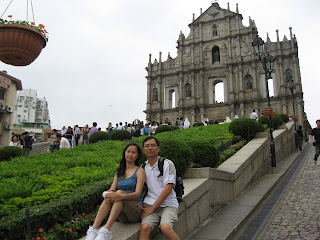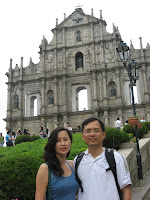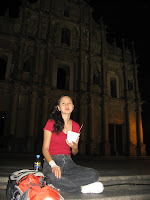 LOU KING HOWE Memorial Museum
LOU KING HOWE Memorial Museum is a tribute by Sibu residents to a philanthropist whose name is synonymous with remarkable stories of early settlers in this predominantly Foochow community in Sarawak.
Lou, a successful rubber planter of his time, had donated generously to set up of a modern medical facility and helped improve the lots of many when malaria and other deadly tropical diseases were ravaging the entire population.

For his effort, Lou now has his name forever enshrined in history.
In recent years and through the initiative by Sibu elders, the disused hospital was given a fresh coat of paint and has since embarked on a new journey as a memorial dedicated to Lou. It also serves as a museum to showcase the health services from a bygone era.
Other communities in Malaysia can learn a thing or two from Sibu about honoring pioneers and leaders but stop short of trumpeting over figureheads.

Unfortunately, many Malaysian museums are guilty of positioning themselves exactly in the opposite. Although these museums operate under the domain of the states, the curators have no qualms to use them to score political points.
Sadly, too many honorable figures because of their race have disappeared from the historical limelight because they don’t fit into somebody’s agenda.
Sibu is a hard act to follow but their approach can be the yardstick in how we promote bias free Malaysian heritage.
If the Sibu museum can succeed on the initiative of its residents and at the same time, doing a fairly impressive job of showcasing its tumultuous past, then the key players in Malaysian conservation circle should get their act together and approach heritage in a comprehensive atmosphere to augur nation-building by all sections of Malaysians.
See the enclosed write-up.
Sarawak's First And Malaysia's Biggest Medical Museum Will Be Ready In July (Bernama, March 14, 2008- Edward Subeng Stephen)
Come July, Sarawak will have the distinction of being home to its first, and the country's biggest medical museum.
Known as the Lau King Howe Memorial Museum, it is the brainchild of a group Chinese businessmen who are descendents of early settlers to the state.The museum itself, is named after one of the early Chinese settlers, Lau King Howe.
The new museum will occupy the original main building of the former Lau King Howe Hospital in Lau King Howe Road near the Sibu Town Square."It will be another attraction to the town and will probably be the biggest of its kind in the country," said Urban Development and Tourism Minister Datuk Sri Wong Soon Koh in a recent interview with Bernama.
He said the project was a joint effort of town leaders, United Chinese Association and other non-governmental organisations, Sarawak Museum, health department, Sibu Municipal Council and public works department."
As a matter of fact, two NGOs namely, Confederation of Pan-Chen Lau Association, Sarawak and the Sibu Kwong Yuen Benevolent Association have each contributed RM300,000 towards its restoration works," he said.
According to Dr Hu Chang Hock, who is chairman of the local branch of the Malaysian Medical Association, the museum "is designed to remember, perpetuate and propogate the spirit of Lau King Howe, his sincerety, benevolence, generosity and his profound love for the sick, poor and disadvantaged."
He said the late Lau King Howe, who was a trained teacher and a pious Christian, arrived from Foochow, Fukien in China in 1916, to manage a rubber plantation here.Before returning to China in 1930, he decided to donate all his properties to the then colonial government to set up the town's first modern hospital. Completed in 1936 at a cost of RM82,000, the hospital was named after him.
On Aug 31, 1994, when the new government hospital at Oya Road was completed and began operations, Lau King Howe Hospital ceased operations.
Dr Hu said the museum, the first of its kind in the state, "will attempt to illustrate the changing pattern of infectious disease such as diptheria, malaria and tuberculosis spectrum in their prominence in the 1930s to the 1950s, to the present prevalent chronic disease such as diabetes mellitus, hypertension, heart disease and others."
"It will also try to illustrate the progress of medicine from the exhibits of age-old reverent equipments of the former Lau King Howe Hospital to the pictorial illustration of modern equipments available at the Sibu General Hospital."
"It will highlight how far we, in Sibu, have came to acquaint and adapt to the new advances in tools of medical applications," he said, adding that the exhibits would be changed frequently to enable the museum to be lively and vibrant.
 Bukit Kepong, Johor received nationwide fame in the 80s when a Malay blockbuster with the same name was released to showcase Malay heroism against communist insurgency in Malaya.
Bukit Kepong, Johor received nationwide fame in the 80s when a Malay blockbuster with the same name was released to showcase Malay heroism against communist insurgency in Malaya.  The key players should however take this time to identify the right message in the overall theme for this dedicated museum.
The key players should however take this time to identify the right message in the overall theme for this dedicated museum. 





























 All flights at this former Portuguese enclave depend on the single elevated runway above the Pearl River Delta.
All flights at this former Portuguese enclave depend on the single elevated runway above the Pearl River Delta.









 We were also pleasantly surprised by the peaceful surroundings and we stepped in to the church we felt like miles away from the loud dings of the city.
We were also pleasantly surprised by the peaceful surroundings and we stepped in to the church we felt like miles away from the loud dings of the city.






